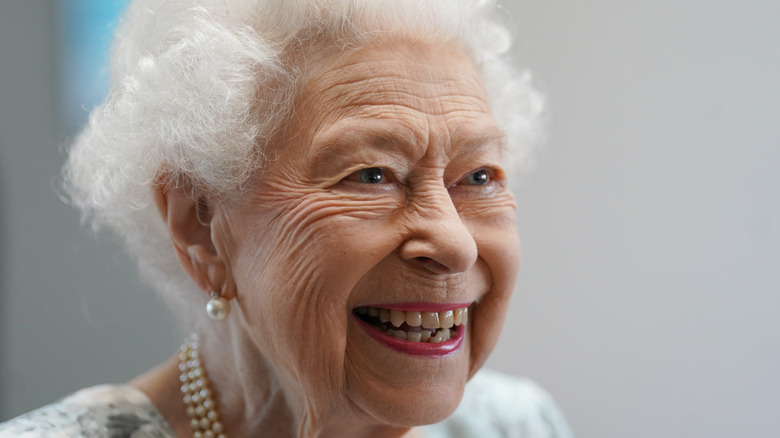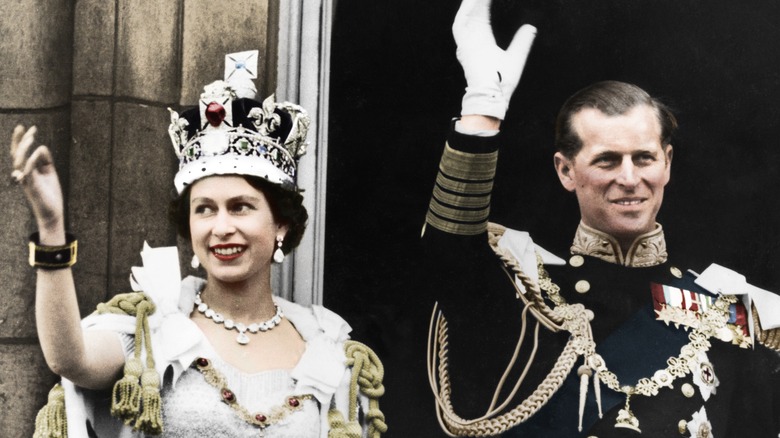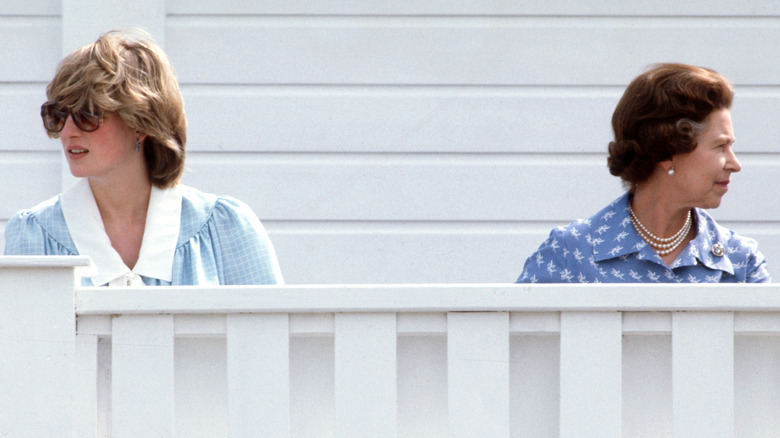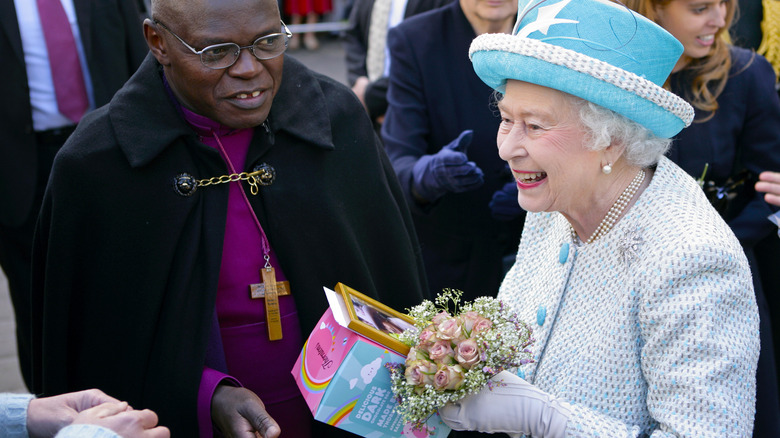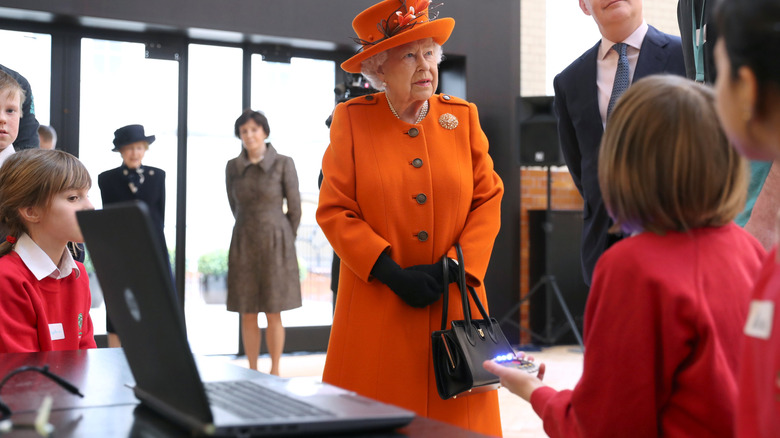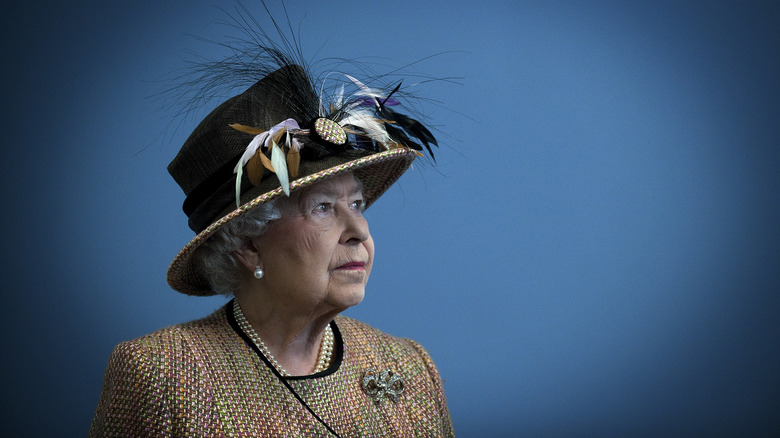All The Ways The Queen Shaped The Monarchy For The Modern World
Queen Elizabeth II's reign defined an entire era of British history. As England's longest-ever sitting monarch, her impact on the world's perception of the monarchy really cannot be overstated. According to Brittanica, however, she was never meant to rule. It was only after her uncle, King Edward VIII, abdicated the throne and her father, George VI, became king, that young Elizabeth became the heir presumptive to the throne.
When her father died in 1952, young Elizabeth became queen of England at the age of 25. Even more impressive than the circumstance that surrounded her ascension to the throne were the ways in which she was able to connect with the people of the Commonwealth and move the monarchy forward into the 21st century.
Elizabeth felt deeply that her greatest contribution to the Commonwealth would be made by dedicating her life to its service, a promise she would keep her entire life. At her coronation in 1953, she pledged herself "to your service, as so many of you are pledged to mine. Throughout all my life and with all my heart I shall strive to be worthy of your trust."
Elizabeth brought a new mentality to the monarchy
Elizabeth brought a modern view of the monarchy to the world. Upon her ascension, she began to see the empire she inherited as a relic of the past, and favored a relationship with the countries of the Commonwealth that was to be built on a willing association with the monarchy, and not imperial rule or subjugation.
An example of this new dynamic was showcased in 1947 when India, a then British colony, declared its political independence from the United Kingdom. The newly independent country subsequently asked to remain as a member of the Commonwealth, a request that was formally granted two years later at the Commonwealth Prime Ministers meeting in London in 1949 by her father, King George VI, per The Commonwealth.
Young Queen Elizabeth understood that this new type of relationship with Commonwealth countries could foster an atmosphere of goodwill between the monarchy and the newly independent nation-states. According to Commons Library, this framework of free association allowed the future monarch the ability to modernize the monarchy while still maintaining international influence.
Her ideas towards marital traditions changed
Queen Elizabeth II's reign not only saw the political revolution of the British monarchy, but a cultural revolution as well. Famously, in a speech during her Ruby Jubilee, the queen lamented that "1992 is not a year on which I shall look back with undiluted pleasure," and who could blame her? It was in 1992 that three of her children either separated from or filed for divorce from their spouses, not to mention that her favorite residence, Windsor Castle, was engulfed in flames causing extensive damage.
The onslaught of marital issues that plagued the monarchy caused the queen a tremendous amount of pain, but the events of that year gave way to the rules surrounding whom a royal family member could take as a spouse to greatly relax — enter, Kate Middleton. According to Cosmopolitan, it was reported that Prince William waited so long to make things official with the now Princess of Wales, Catherine, due to his firsthand witnessing of the arranged marriage of his parents go disastrously wrong.
Upon the dissolution of three out of her four children's marriages, Queen Elizabeth decided to bestow her blessing upon marriages of her grandchildren's choosing. Her ability to recognize that the royal practice of arranging marriages had directly led to the failed relationships of her children and instability within the monarchy was a stunning break from royal tradition.
She got up close and personal with her Commonwealth
Queen Elizabeth II was known for her ability to truly connect to the people of her Commonwealth. Royals before her were viewed as distant, aloof, and even out of touch, by some. Prior to her reign, during state visits to foreign countries, it was customary for the visiting royals to ride by car down streets lined by seas of people who had gathered to catch a glimpse of them, but that was the closest they would ever get.
During a visit to New Zealand in 1970, Elizabeth decided it was time for that to change. Instead of traveling the streets of the country by car waving graciously, she decided that she would stroll along the throngs of people who had gathered to see her, and according to the Shropshire Star, the walkabout was born. According to Insider, this was Elizabeth's way of making the monarchy more accessible to the people of the Commonwealth. By interacting with people one on one, she was able to develop a new level of connection between her and her people, solidifying the monarchy's relevance in the modern world.
She used technology to form deeper connections with her people
In keeping with trends of revolution and connection, when the age of technology and social media came to be, Queen Elizabeth II saw these advancements as yet another way to bring the monarchy into the current age. According to CNN, the queen had a presence on social media before her own children did.
Her early adoption of these platforms allowed her to reach even more of her Commonwealth, now, instantaneously. Her first post to the social media platform, Instagram, was in March 2019 when she posted letters written to her great-great-grandfather, Prince Albert in 1842, from Charles Babbage, who is credited as being "the world's first computer pioneer," in an article for NBC. Prior to her first Instagram post, the queen had also become a Twitter user back in 2014. Queen Elizabeth rarely missed an opportunity to add layers of relevance to the monarchy and transform it into a treasured and useful part of modern society.
A lasting impact
During her lifetime, Queen Elizabeth II reigned over millions of people and dozens of countries and all the while led her people and family through changing times and circumstances. According to The New York Times, her time on the throne saw war, personal scandal, economic upheaval, and 15 prime ministers. She endured personal tragedy and triumph and according to The Week, remains the most popular royal figure of modern times.
In true Elizabeth fashion, as royal watchers, we are all now collectively looking toward the future. After long-standing reports of the queen's declining health, Queen Elizabeth II died on September 8, 2022. Upon her death, her son, Prince Charles became King Charles III and succeeded his mother as head of the Commonwealth. Only time will tell in what direction this newly minted monarch intends to travel. We can only hope that King Charles III will continue to honor his mother's commitment to further connect the monarchy, the Commonwealth, and the world.
